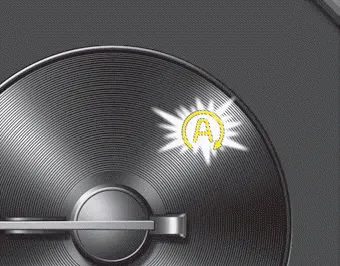Kia Stinger CK: ISG (Idle Stop and Go) system / ISG system malfunction
Contents:
The system may not operate when:

The system may not operate when an ISG related sensor or system error occurs.
The following will happen:
- The yellow AUTO STOP (
 ) indicator
on the instrument cluster will stay on after blinking for 5 seconds.
) indicator
on the instrument cluster will stay on after blinking for 5 seconds. - The light on the ISG OFF button will illuminate.
✽ NOTICE
If the ISG OFF button light is not turned off by pressing the ISG OFF button again or if the ISG system continuously does not work correctly, have your vehicle inspected by an authorized Kia dealer.
When the engine is in Idle Stop mode, it's possible to restart the engine without the driver taking any action. Before leaving the car or doing anything in the engine compartment, stop the engine by turning the ignition switch to the LOCK/OFF position or removing the ignition key.
✽ NOTICE
If the AGM battery is reconnected or replaced, ISG function will not operate immediately. If you want to use the ISG function, the battery sensor needs to be calibrated for approximately 4 hours with the ignition off. After calibration, turn the engine on and off 2 or 3 times.
Other information:
Kia Stinger (CK) 2018-2023 Owner's Manual: Center Fascia Panel
Components and components location Component Location 1. Monitor fascia panel Repair procedures Replacement Put on gloves to protect your hands. • Use a plastic panel removal tool to remove interior trim pieces without marring the surface.Kia Stinger (CK) 2018-2023 Owner's Manual: Automatic transmission operation
The automatic transmission has 8 forward speeds and one reverse speed. The individual speeds are selected automatically, depending on the position of the shift lever. ✽ NOTICE The first few shifts on a new vehicle, if the battery has been disconnected, may be somewhat abrupt. This is a normal condition, and the shifting sequence will adjust after shifts are cycled a few times by the TCM (Transmission Control Module) or PCM (Powertrain Control Module).Categories
- Manuals Home
- Kia Stinger Owners Manual
- Kia Stinger Service Manual
- New on site
- Most important about car


